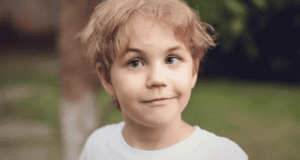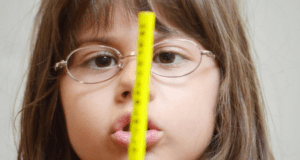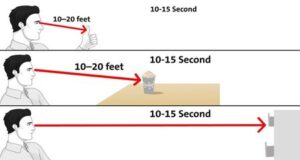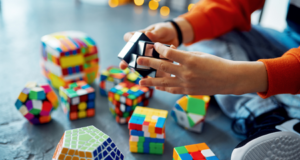Vision Therapy Exercises for Lazy Eye
When there is a vision issue called lazy eye, the eye and brain do not communicate properly. The weak eye concentrates properly because the brain prioritizes one eye over the other.
Though it can also affect adults, Amblyopia or Lazy Eye is the most frequent cause of vision issues in children.
What is Amblyopia or Lazy Eye?
An individual is said to suffer from lazy eye when one or both eyes do not develop clear vision, and the brain begins to disregard the information from the affected eye. Lazy eye affects about 3% of children and typically appears before age 2 or even by age 8.

Lazy eye comes in a variety of forms. And to combat the same, there are numerous ways to use vision therapy exercises for lazy eye that you can try to enhance your eyesight.
Here are some of the vision therapy exercises:
Pencil Push-ups
To teach the eyes to converge or move in closer toward one another when looking at a close object, pencil push-ups are an excellent vision therapy exercise.

Hold a pencil at arm’s length and put on your best near vision angle to perform this exercise. Pay attention to the pencil’s tip. Get the letter on the pencil in focus, so it is readable. Then, move the pencil slowly toward your nose while focusing solely on the letter. Once it doubles, remove the pencil from your eyes. Repeat several times.
Near and Far focusing exercises
Near Focus – Choose a close object that is roughly 6 inches (15 cm) away from you for your near focus. It might be something on your desk, your hand, a piece of jewellery you’re wearing, or anything else you have nearby. Spend two seconds focusing on this and carefully going over it.

Distant Focus – Choose an object that is far away from you, at a distance where it is a little hazy but you can still sort of make it out. You can choose an object or book on the shelf at the opposite end of the room, a branch outside the window, a road sign, the edge of a building, or the licence plate of a car as examples of distant focus subjects.
Alternate Near and Distant Focus – Change your eyes’ focus every two seconds from a close-up to a far-away item, effectively “pumping” between the objects.
Alphabet Ball exercise
Blow up a beach ball, then write or draw letters, animals, or colours on it with permanent markers. Ask the child to say what they last saw on the ball while you roll or toss it, then have them catch it. Once more, such a great exercise for fixation, concentration, binocularity, etc.!
Brock String exercise
Frederick Brock invented the Brock string as a tool to aid him with his own visual issue. This exercise is thus named after him.

During this exercise, the Brock string is attached to a fixed object, mostly a doorknob, and one end is held at the tip of the nose when being used. The patient must concentrate on each of the three beads spaced apart on the string. Better binocular vision can be developed with the help of this vision therapy exercise for lazy eye.
Dot Card exercise
- You’ll need a dot card made specifically for this exercise for this task.
- The dot card should be bent into a broad, angled v shape. A little downwardly tilted, place one end of the card on the tip of your nose.
- Try to see the dot as one and not two while concentrating on the one that is furthest away.
- The dots closer to you should appear doubled when you see the dot as one. You need to notice that the dots resemble an upside-down V-shape.
- Try staring at the next dot after a few seconds of concentrating on the farthest dot as one image.
- Try to maintain the dot you are concentrating on as a single image as you go down the line of dots. Right now, you ought to see an X.
- Go back up the line to the next dot and try again if you are unable to see the dot as a single image.

Don’t worry if you don’t get it right away; practice will help with this exercise.
Reading
Your weak eye can become better by concentrating on small print and moving the eye over a page when you read a book, the newspaper, bills, homework, or a magazine. Try reading while covering the dominant eye with your palm or a patch to force the weaker eye to take the lead.
Check your prescription if you find it too difficult to read small print with just your weak eye. Perhaps all you need to do is keep practicing; strengthening the weak eye’s focus requires patience and perseverance.
Solving Puzzles
Any kind of puzzle can assist your weak eye in becoming stronger when the leading eye is covered. Try traditional word puzzles with relatively small types, mazes, and activity books.

Your weak eye must concentrate on strengthening its focus if it must focus on words, visual details, exact forms, or monitoring the movement of a pen through defined areas (to circle words or navigate a maze, for example). Infact, amblyopic children and adults can benefit from this type of fun and simple therapy.
Playing Video Games
Yes, you did read that right!
For people of all ages, playing video games is one of the best vision therapy exercises for the lazy eye. They can benefit from these games to better their vision in a very safe and easy manner. Many professionals who have previously thought that adult lazy eye was difficult or impossible to reverse have been taken aback by this method.
Studies on video games made specifically for amblyopic individuals have revealed that they can aid in speedily improving vision. If your child is little, just make sure to pick something acceptable for their age. Initial research on youngsters with amblyopia also demonstrates that playing video games in combination with patching is more effective at restoring eyesight than patching alone.
The number of time participants in studies of video games for amblyopia play the games varies greatly (from a half hour per week to 2 hours per day). Whatever the case, the benefit appears significant, and it might be a lot simpler to encourage your youngster to perform their eye exercises now than before!
Our vision therapy exercises for lazy eyes – Bynocs AmblyGo
Bynocs AmblyGo is a cutting-edge, revolutionary technology that acts as a super-effective vision therapy that can assist both children and adults suffering from lazy eye.
The dynamic gaming interface under AmblyGo software aids amblyopic patients to focus, helping the weaker eye to function more naturally. Each of these fun gaming sessions lasts 30 minutes, and you are advised to attend at least 5 days a week.
All in all, AmblyGo is a simple and entertaining lazy eye treatment method requiring little equipment. The therapy sessions can be completed either in the convenience of one’s own home or at an eye clinic.
Get in touch with us to get detail-oriented information on this vision therapy exercise for lazy eye.

